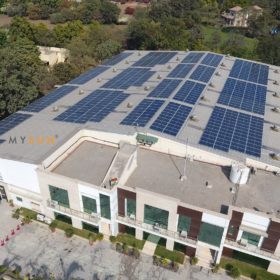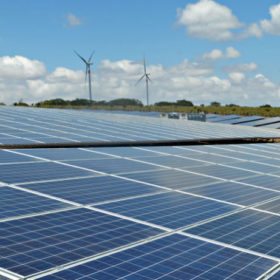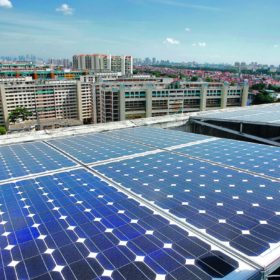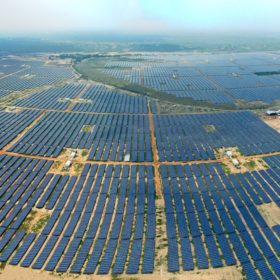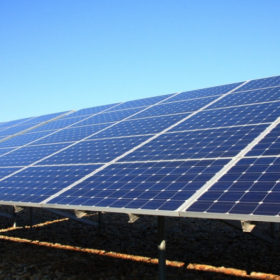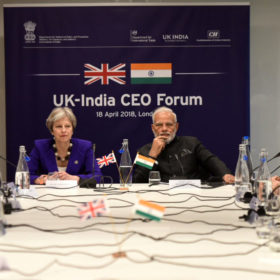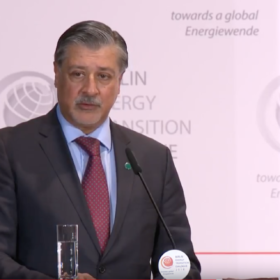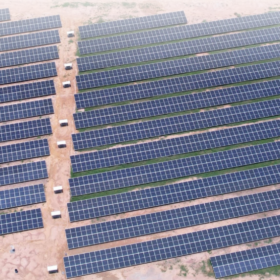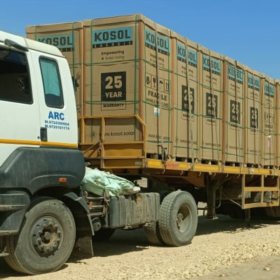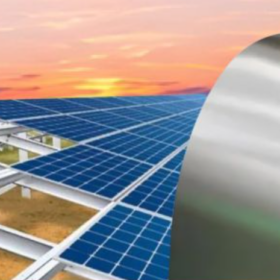India’s rooftop sector still lagging behind
With barely 1.8 MW solar power (roof top) achieved in the first month of the 2018-2019 financial year, against the end of year target of 1000 MW, India’s solar dreams are hitting massive rooftop blocks. Grid-interactive solar power (ground mounted) has fared better, achieving 231.81 MW against the EoY 10 GW target.
MNRE to support 2.5 GW wind-solar hybrid projects
India’s Ministry of New & Renewable Energy has announced a Scheme for setting up of 2.500 GW Inter-State Transmission System (ISTS)-connected wind-solar hybrid projects.
India may miss solar PV target, says CEO survey
The country will achieve solar PV capacity of 50 to 75 GW by 2022 – a little over 60% of the 100 GW target. Total rooftop capacity will be less than 10 GW.
India announces new policy for wind-solar hybrid systems
India has unveiled a national wind-solar hybrid policy that provides a framework for promotion of large grid connected wind-solar PV systems for optimal and efficient utilization of transmission infrastructure and land, reducing the variability in renewable power generation and thus achieving better grid stability.
Haryana launches scheme for solar-powered irrigation
In a long-awaited move, farming irrigation systems in Haryana will be powered by solar energy.
Uncertainty and opportunity loom for renewables sector — report
Uncertainty in the renewable energy sector continues to drive a “relentless focus on cost” to soften the impact of protectionism, subsidy cuts and rising interest rates throughout the world, EY says in its latest Renewable Energy Country Attractiveness Index (RECAI) report. But the evolving outlook for project finance, as well as the gradual maturation of technologies such as blockchain, present new challenges and opportunities.
India slips to 4th place in EY’s attractiveness index for solar PV investments
While China continues to top EY’s Renewable Energy Country Attractiveness Index (RECAI), India has slipped from second position to fourth, due to increasing investor concerns about possible solar import tariffs and disputes between developers and distribution companies.
Indian government mandates stringent quality controls for solar equipment
In a much-awaited move, India’s Ministry of New and Renewable Energy (MNRE) has mandated that, effective April 16, 2018, all solar PV manufacturers will have to register their equipment with the Bureau of Indian Standards (BIS).
UK, India strengthen solar ties with new commitments
The governments of the U.K. and India have announced a new green fund, managed by Lightsource BP and the Everstone Group, which will see up to £500 million invested in green energy in India. The U.K. has also joined the Indian-led International Solar Alliance (ISA).
IRENA: Renewables can account for up to two-thirds of total energy use, and 85% of power generation by 2050
In the latest edition of its long-term renewable energy outlook, the International Renewable Energy Agency (IRENA) calls for at least six-fold deployment of renewables by 2050, compared to the levels set out in current plans. Investment in low-carbon technologies needs to increase by around 30% to $120 trillion to enable the energy transition and avoid escalating stranded assets, the report finds.
